Here is the trace of activation records for the recursive Fibonacci function:
1. main calls f(4)
RA: main, RV: ?, LV: n=4
2. f(4) calls f(3)
RA: f(4), RV: ?, LV: n=3
3. f(3) calls f(2)
RA: f(3), RV: ?, LV: n=2
4. f(2) calls f(1)
RA: f(2), RV: ?, LV: n=1
5. f(1) returns 1
RA: f(2), RV: 1, LV: n=1

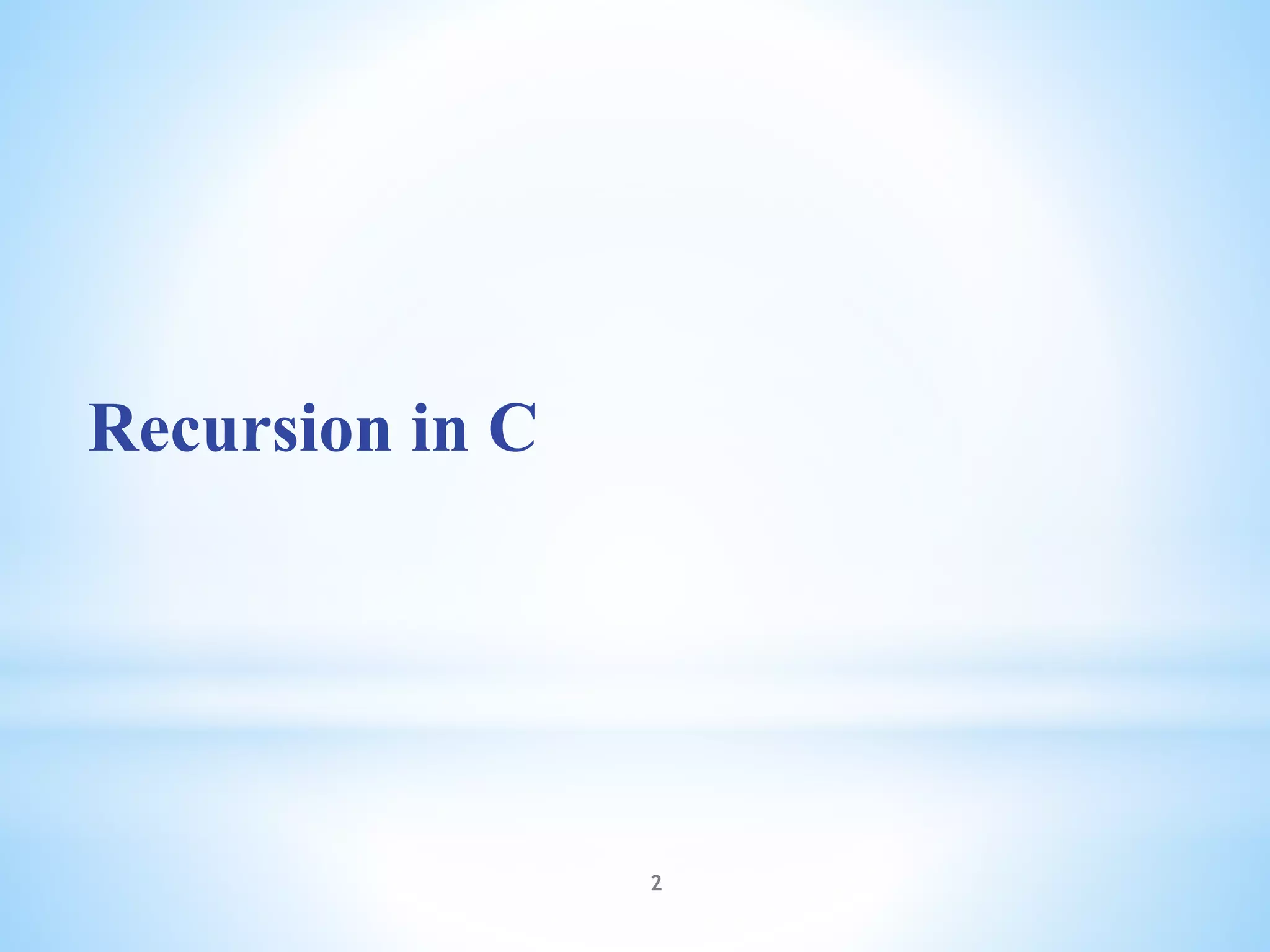
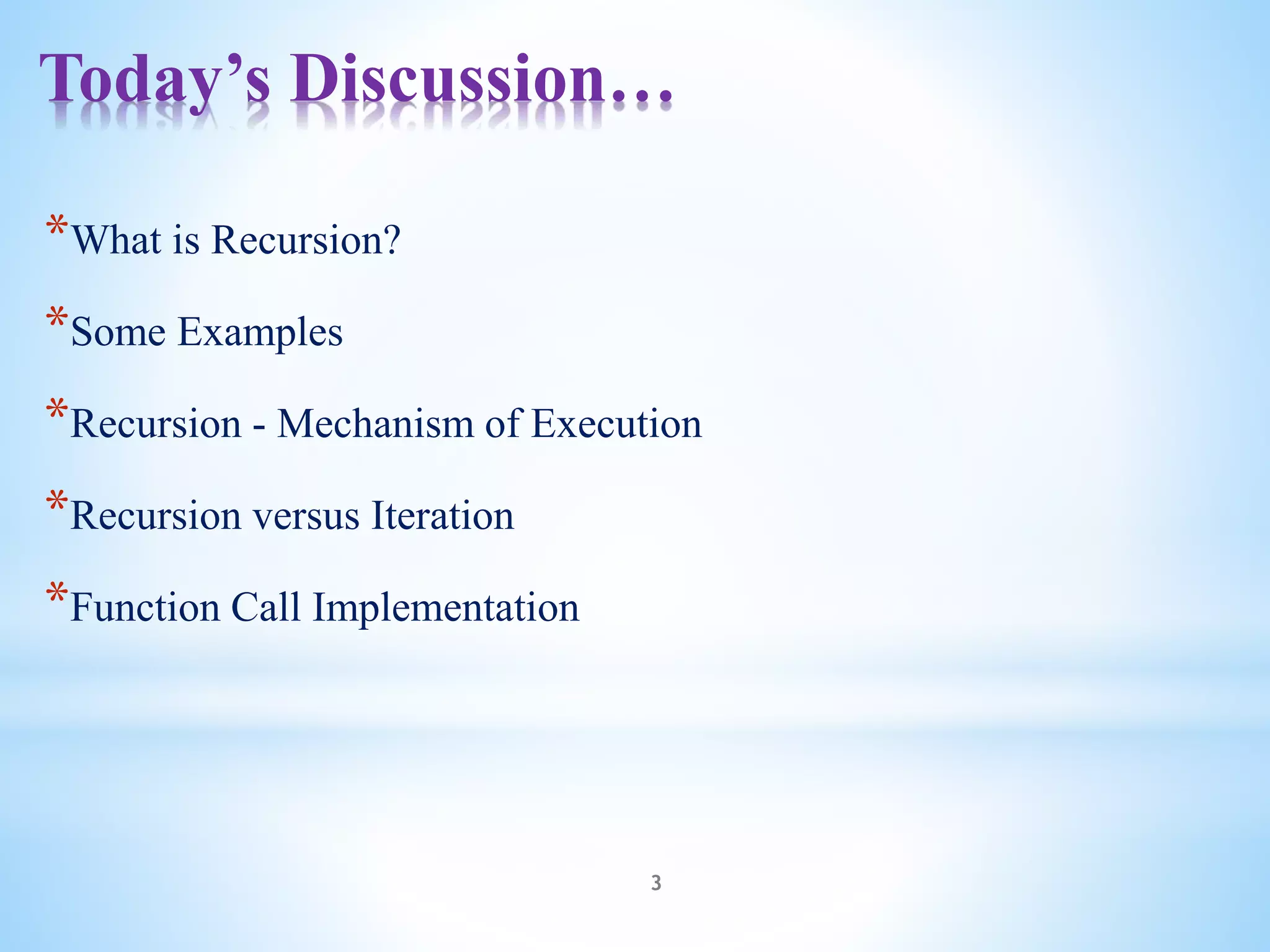
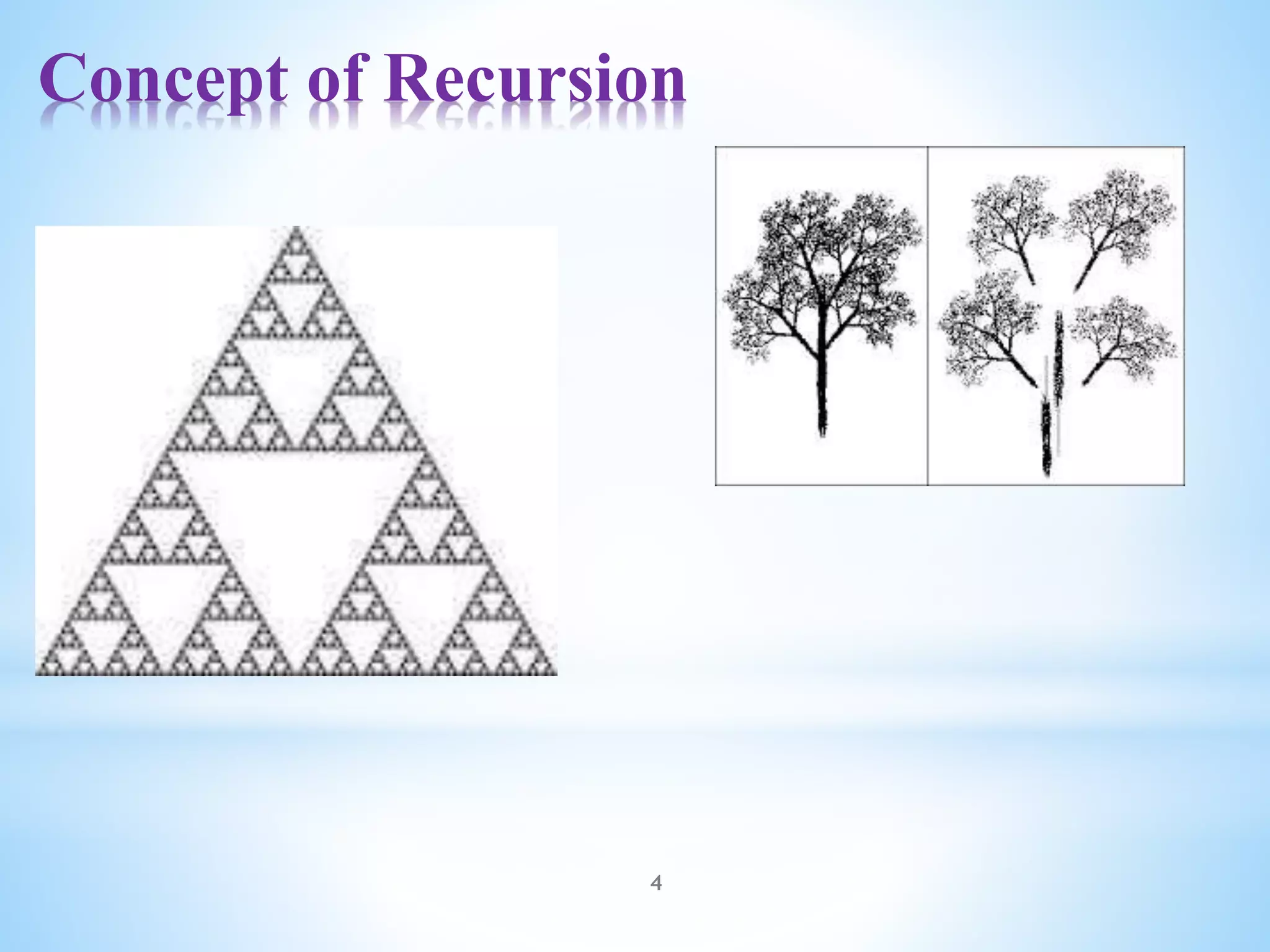
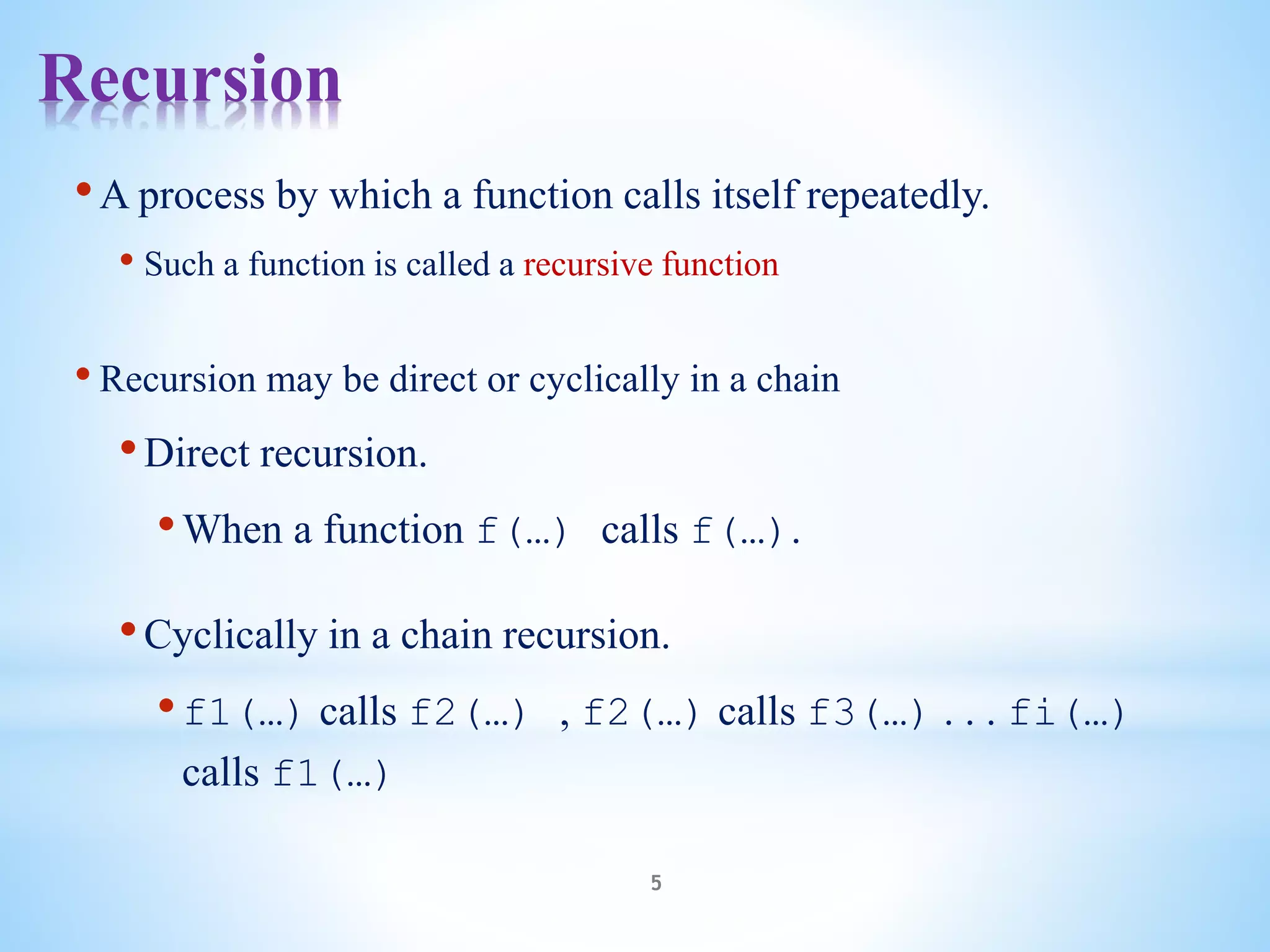

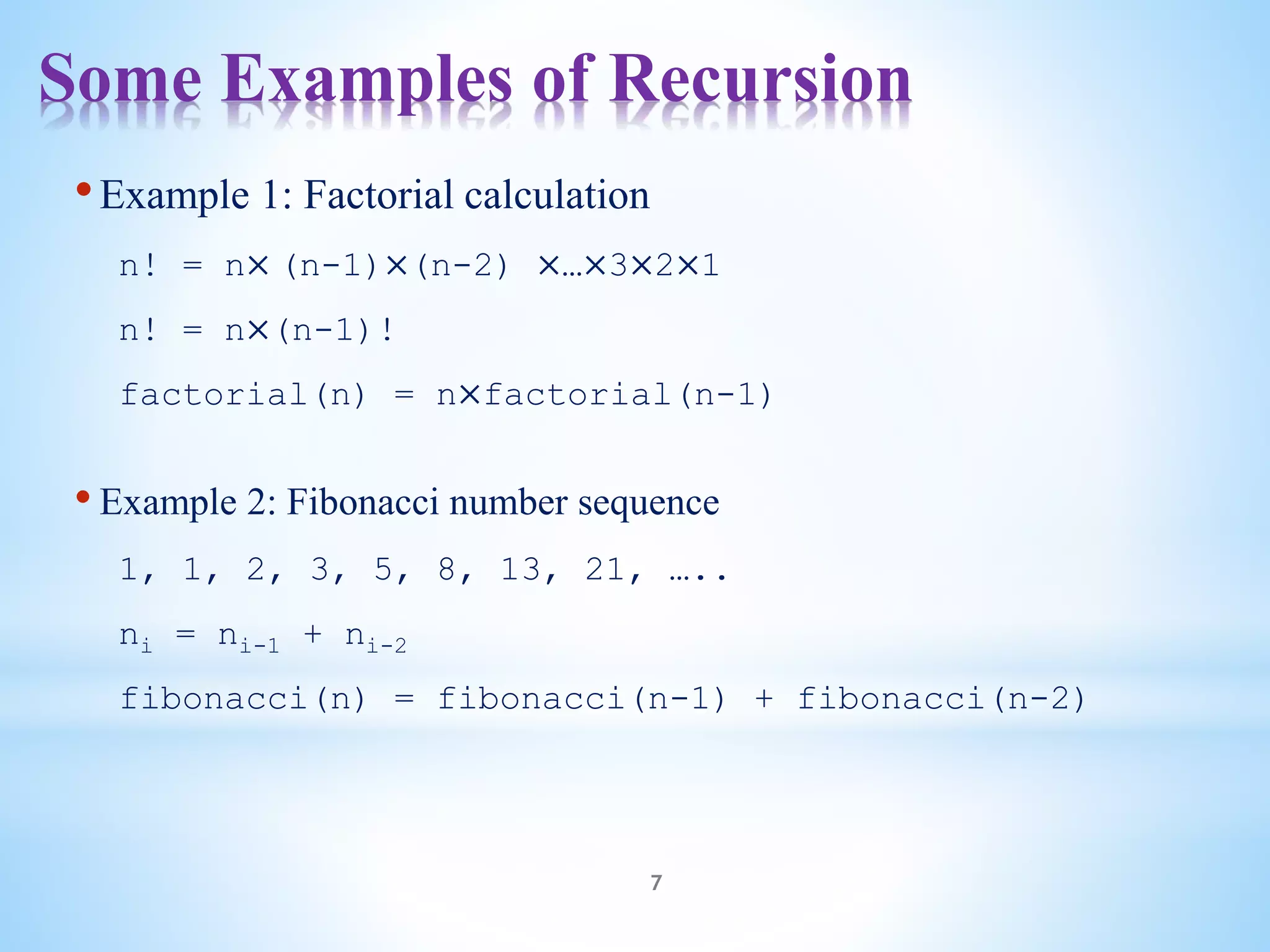
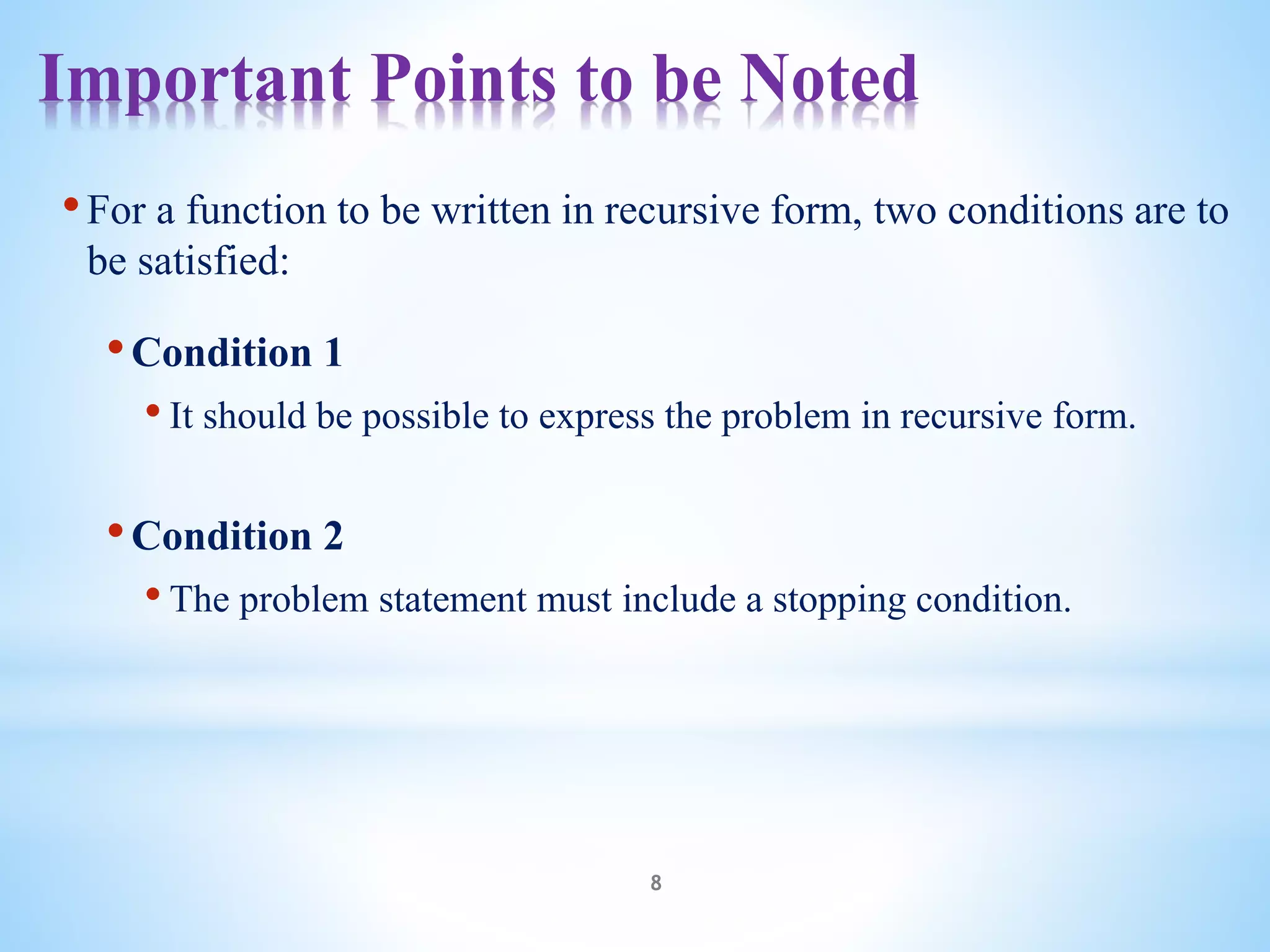
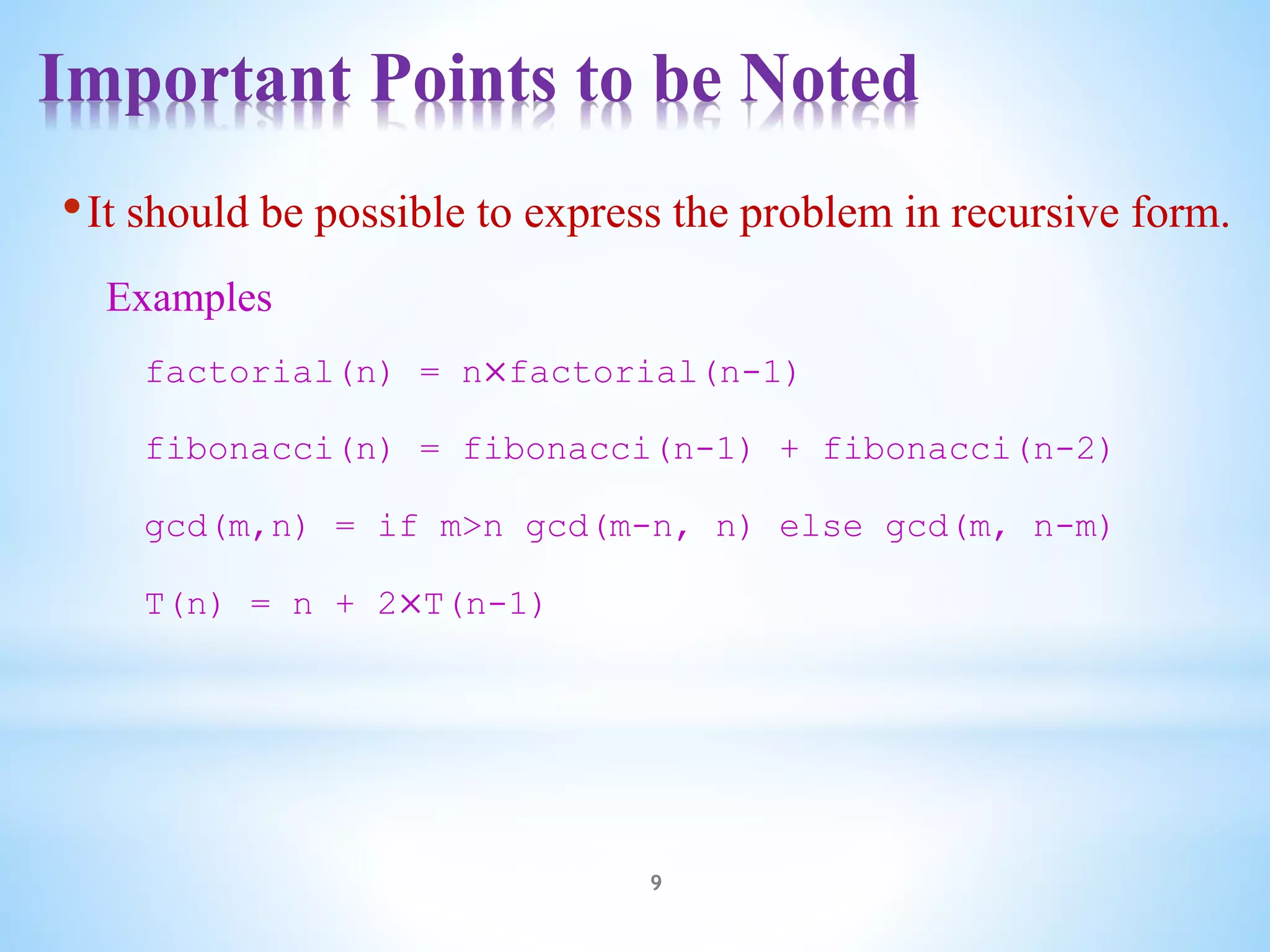
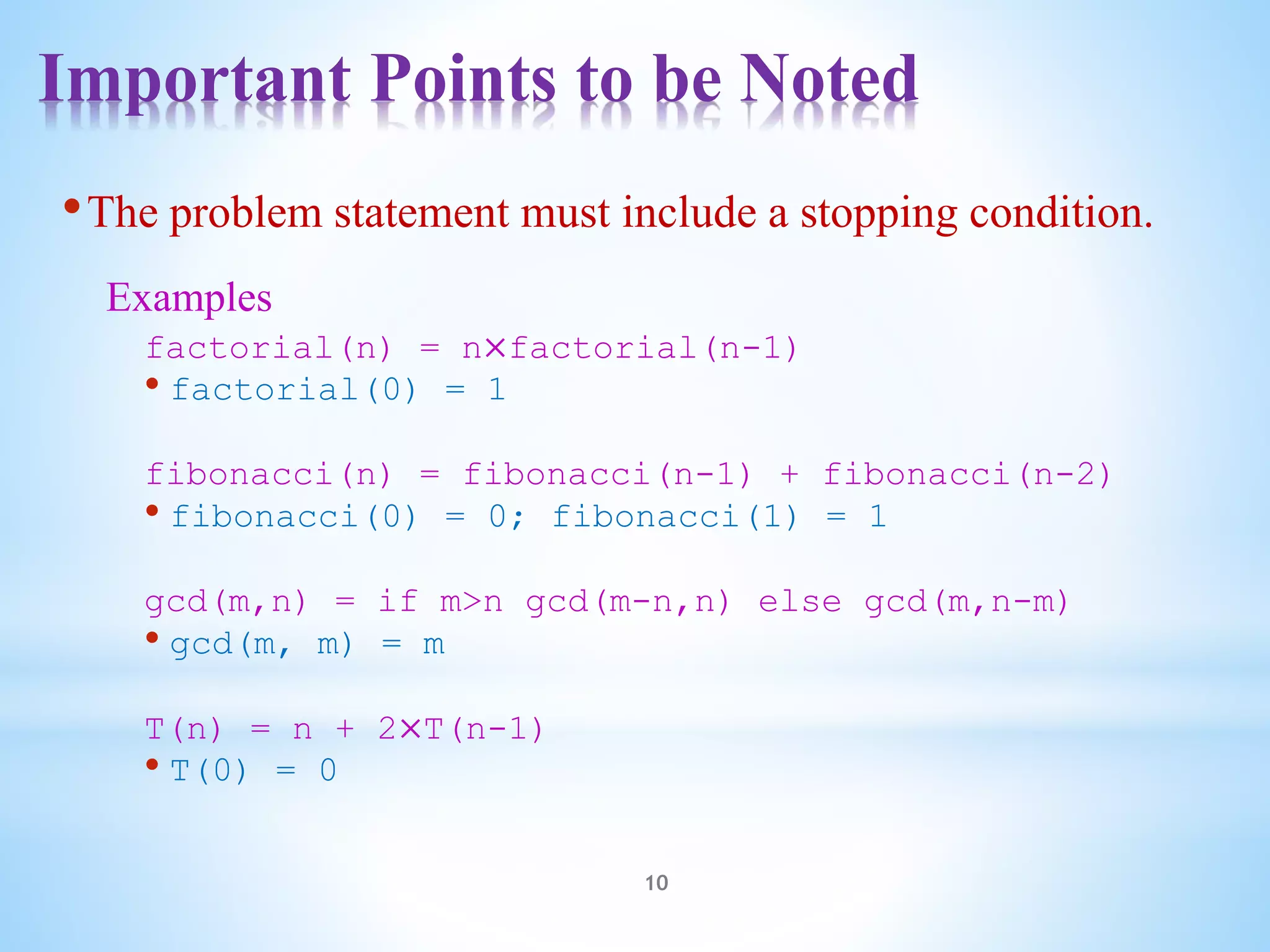
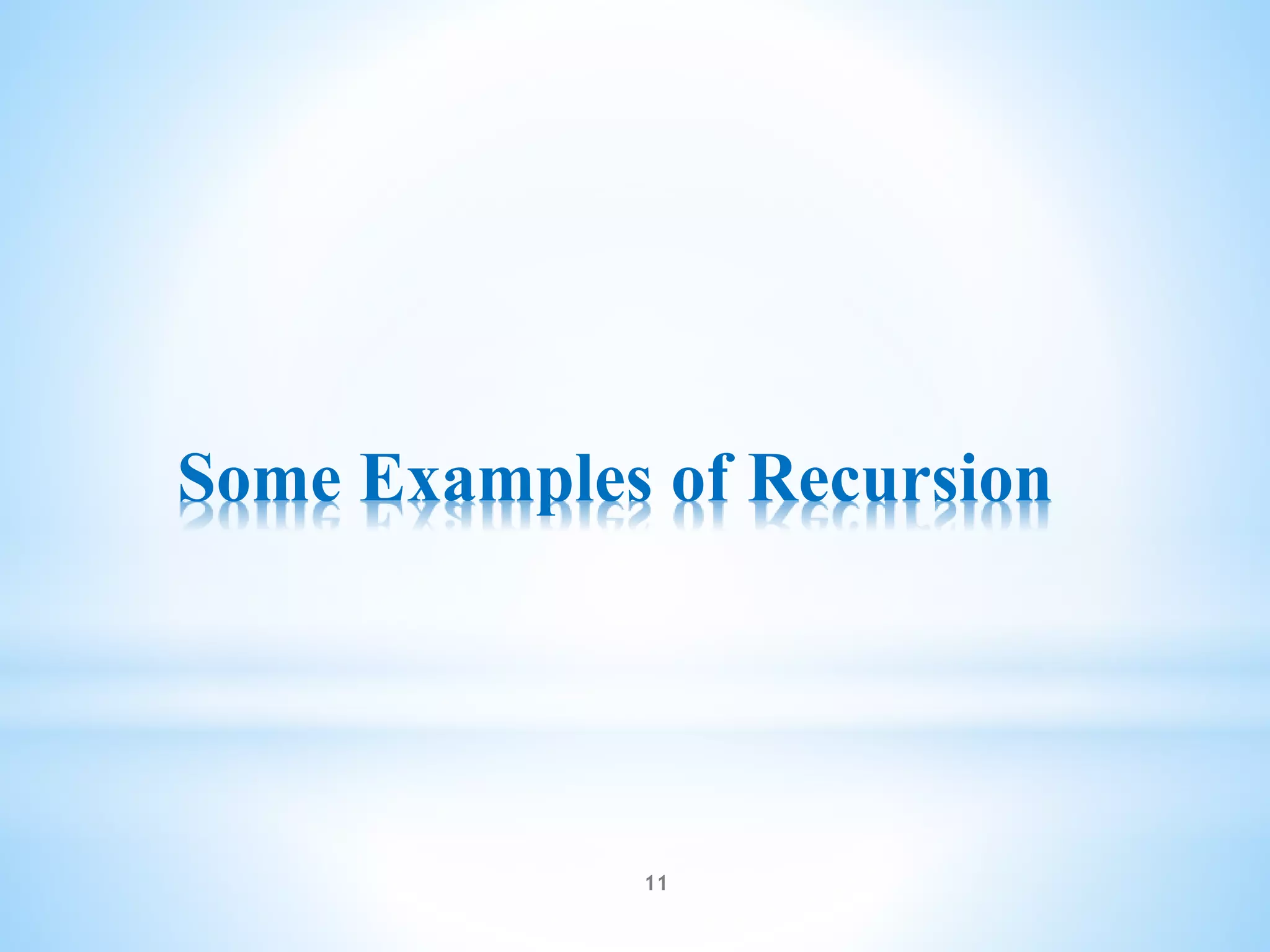
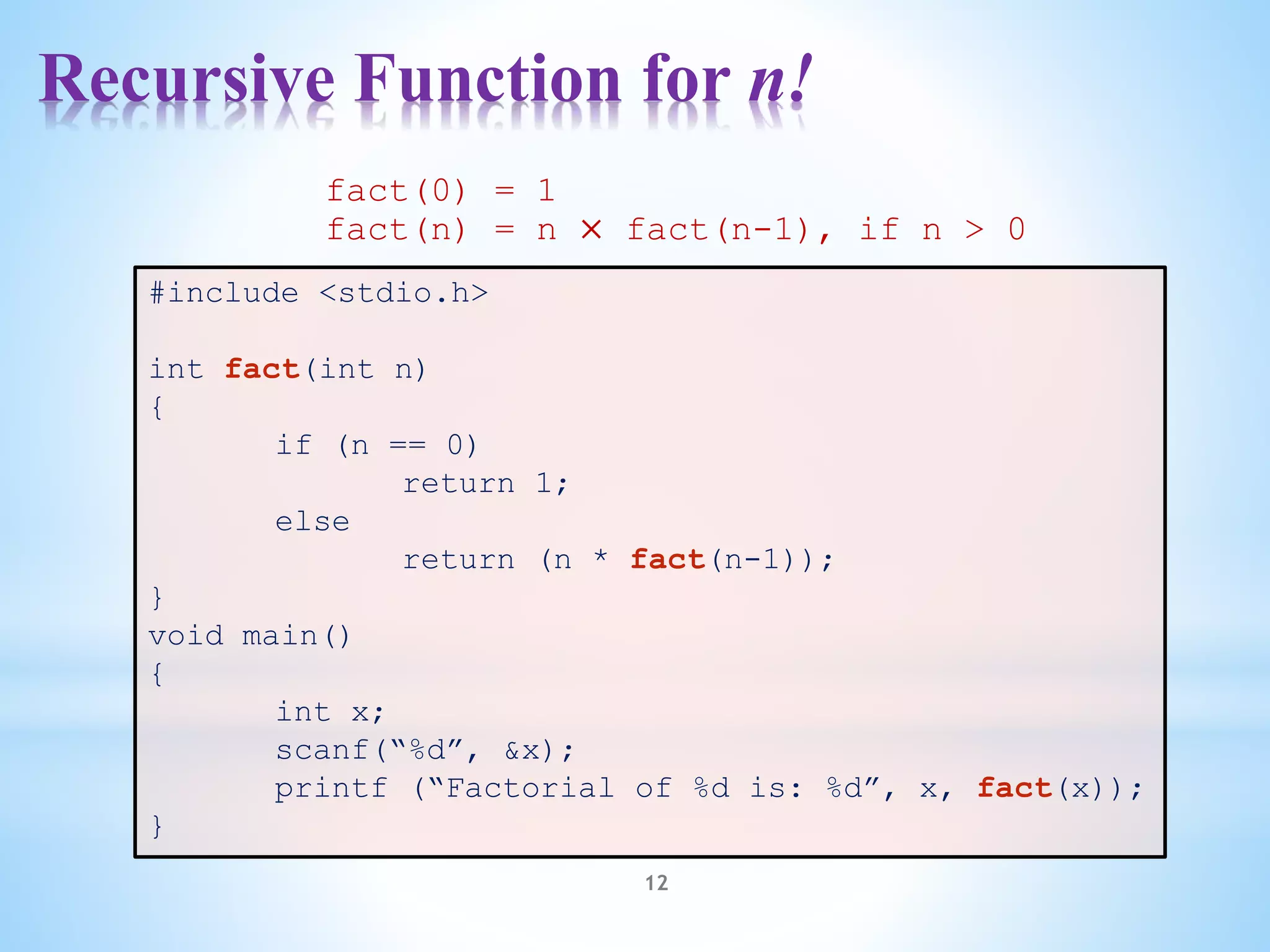
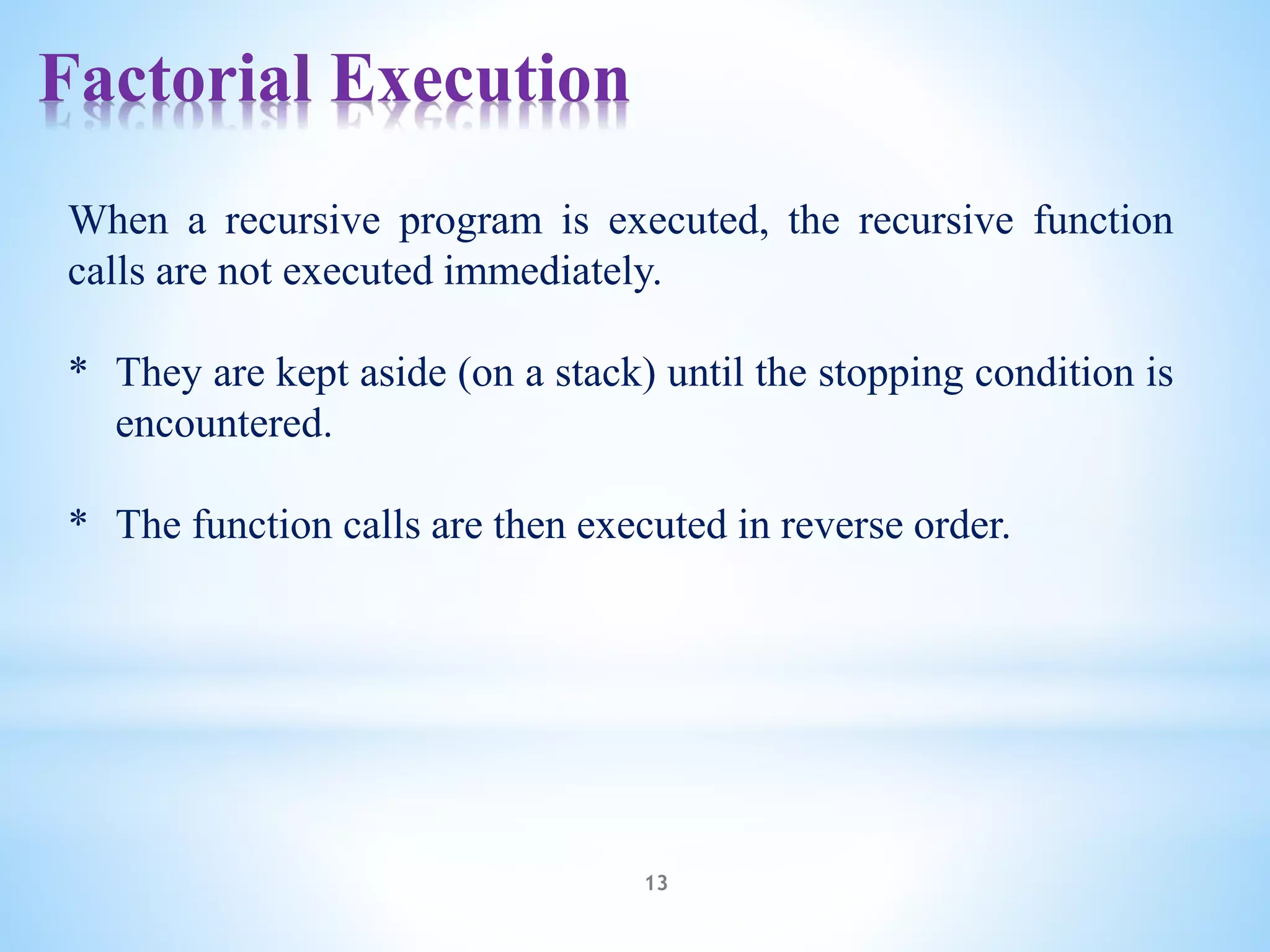
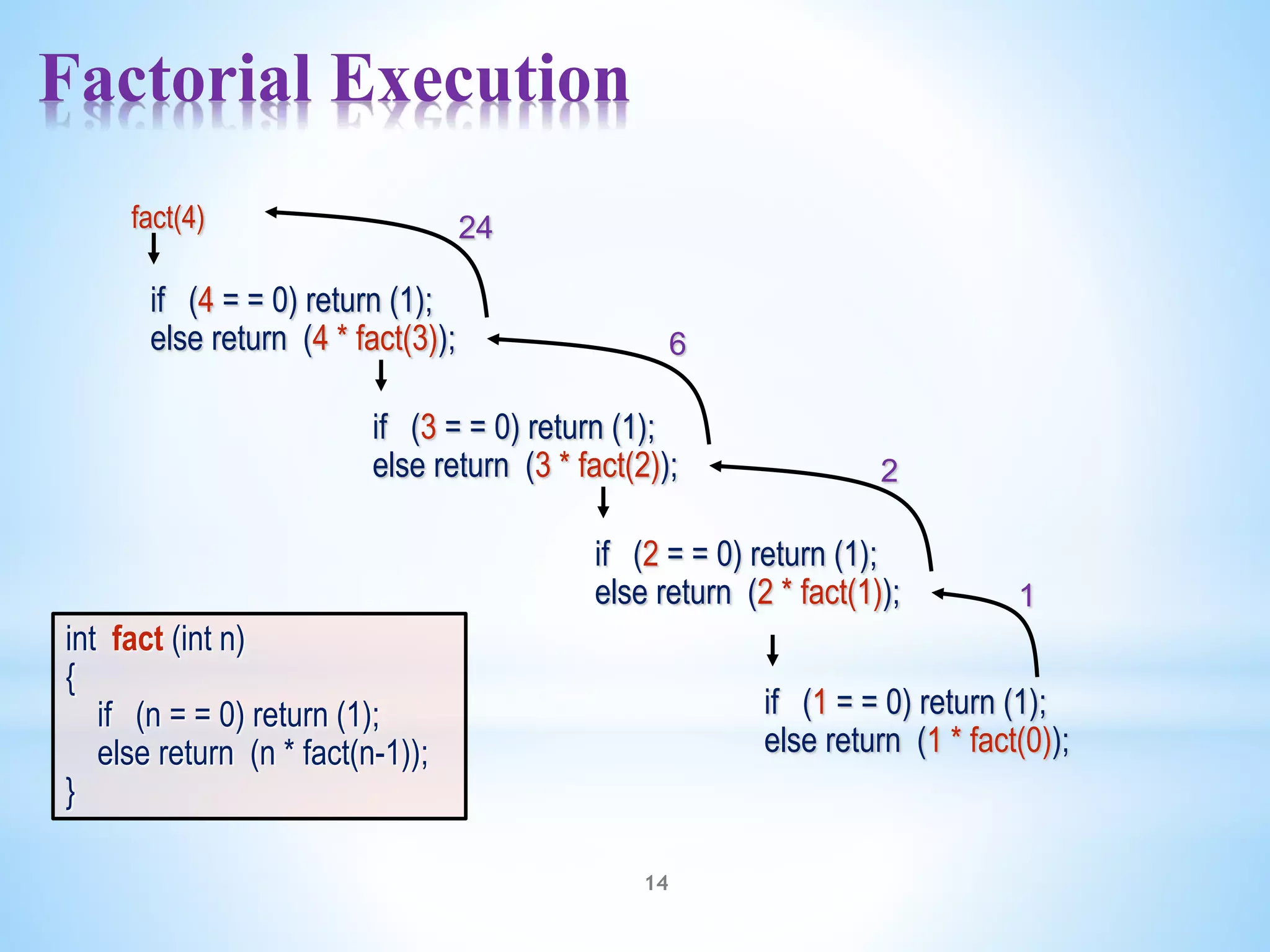


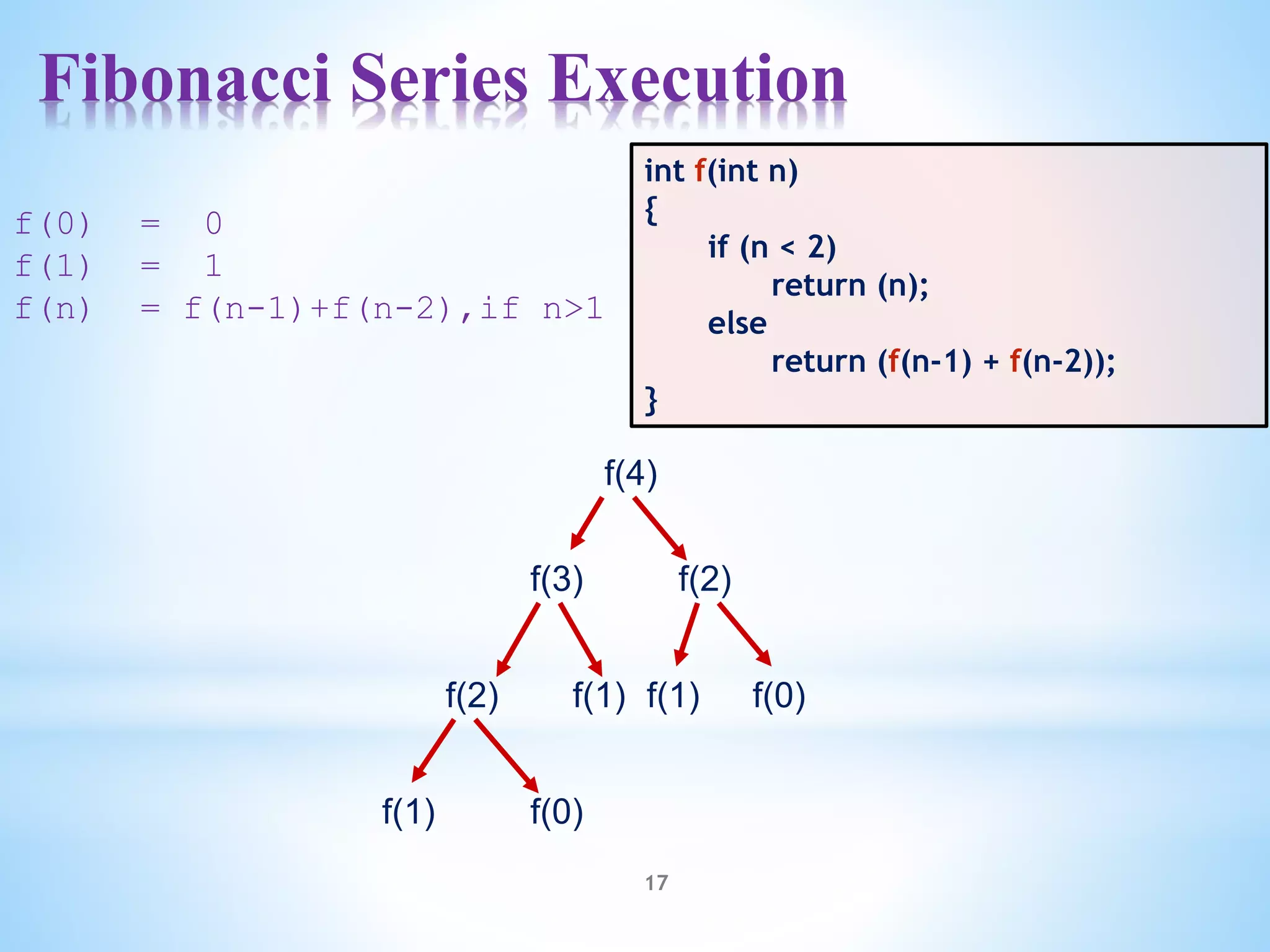
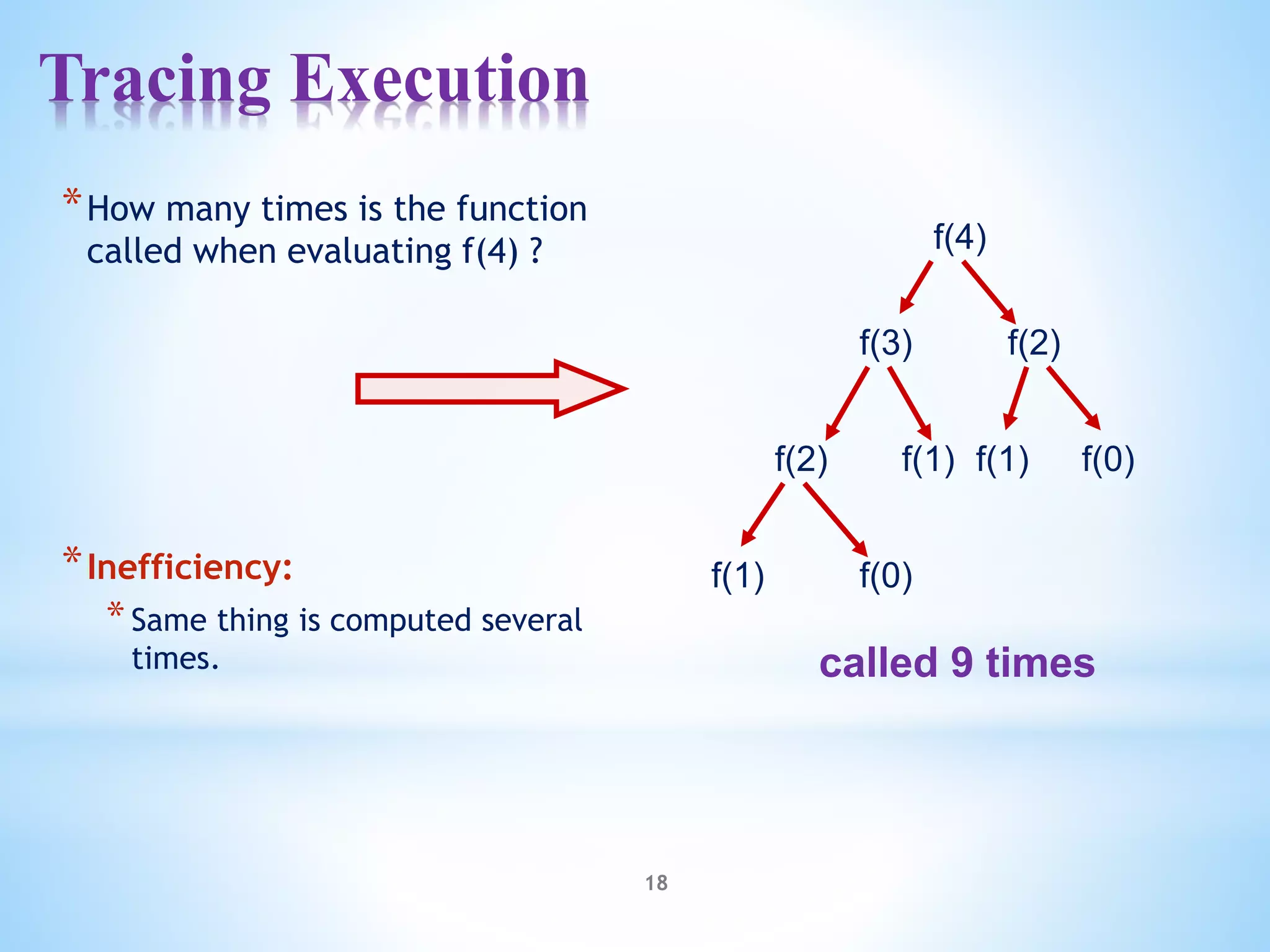
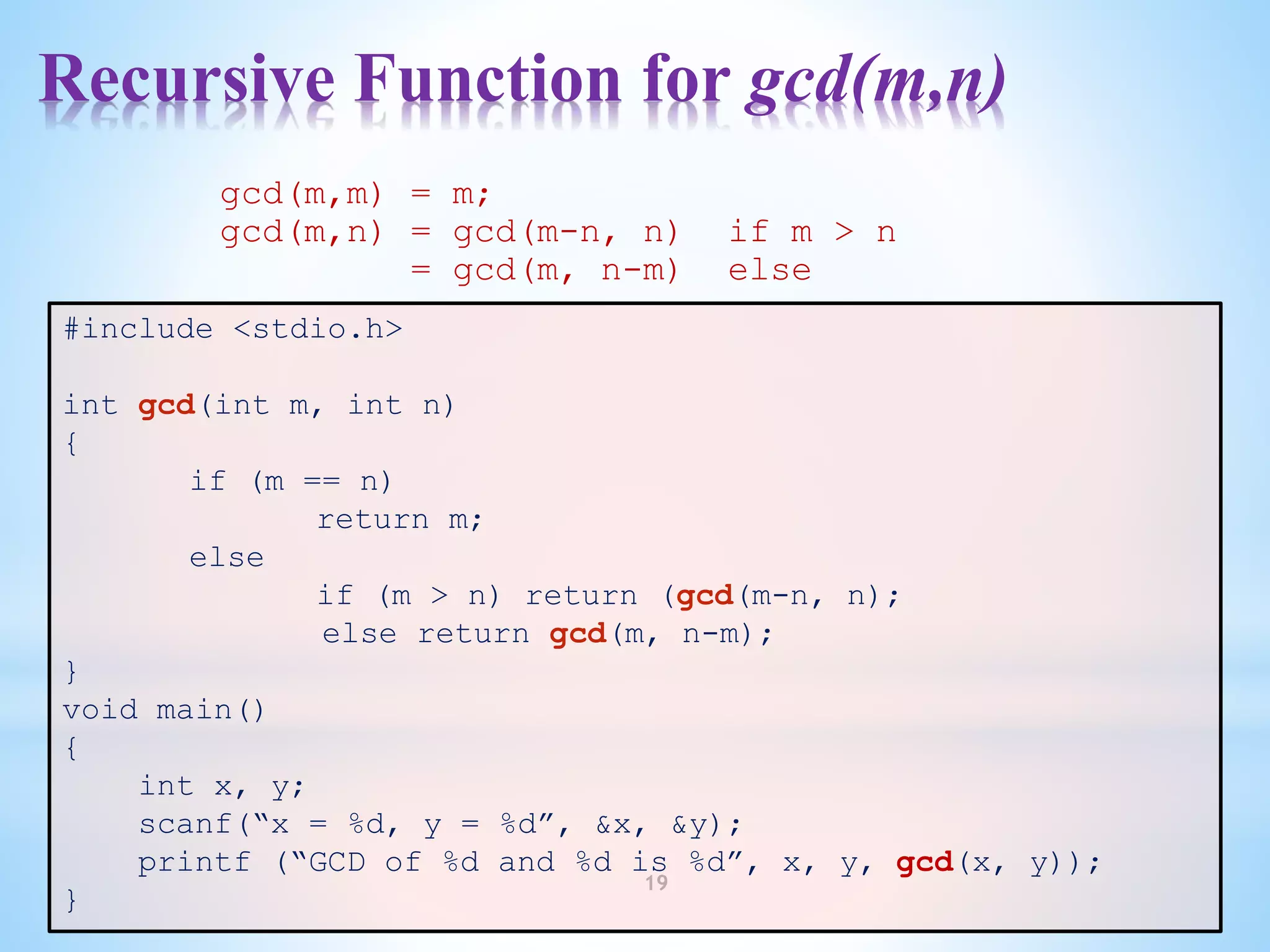
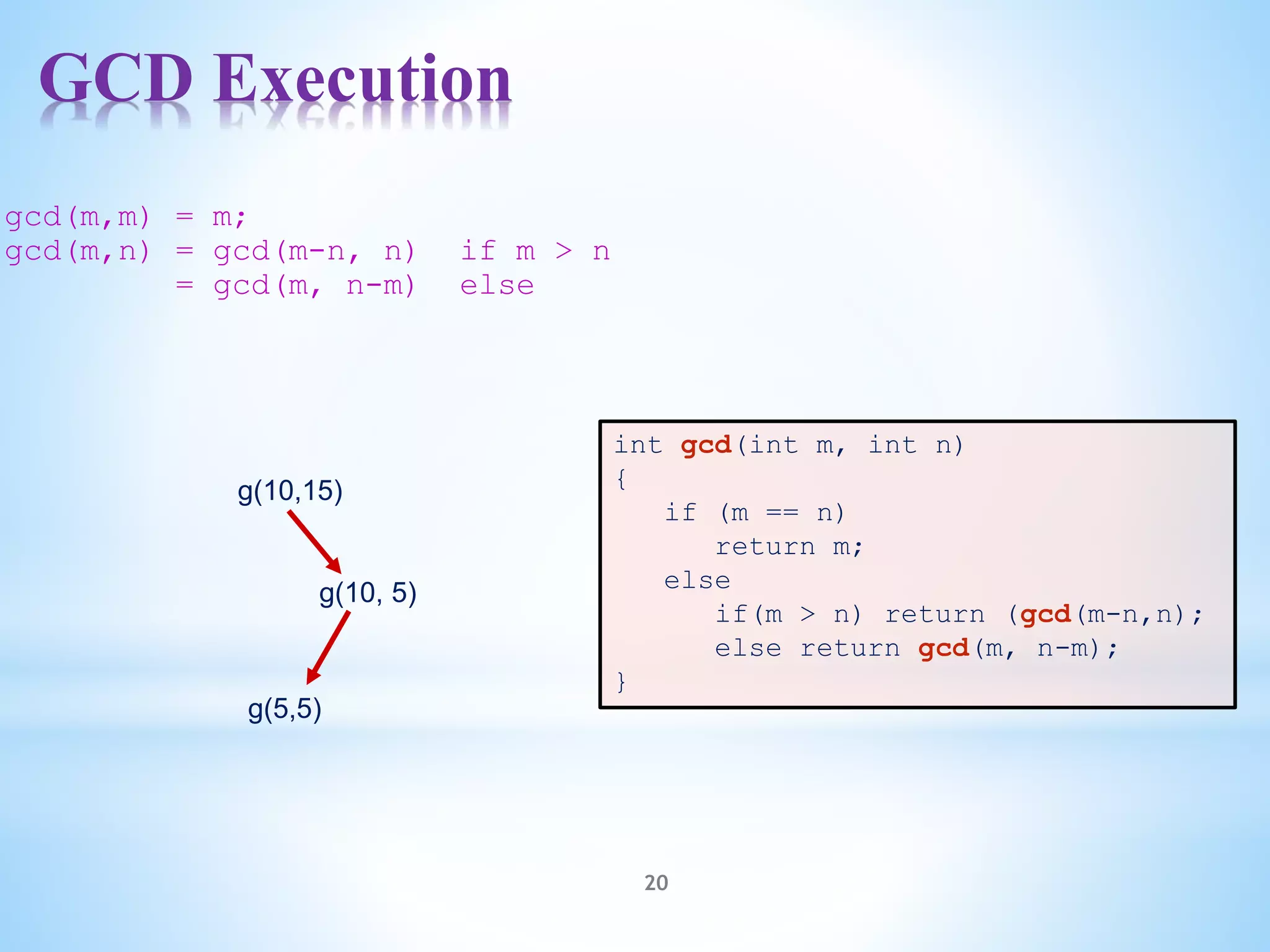


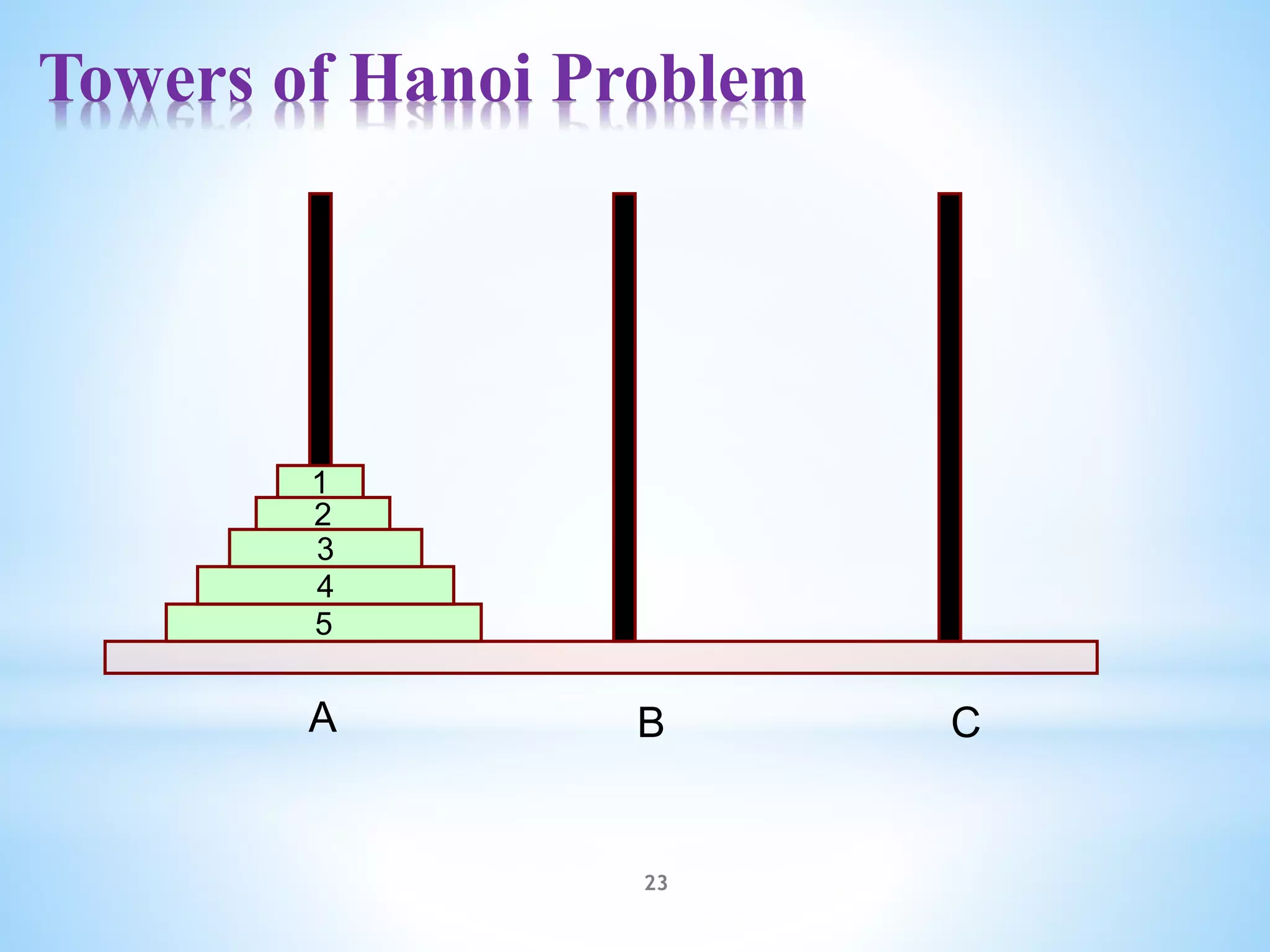

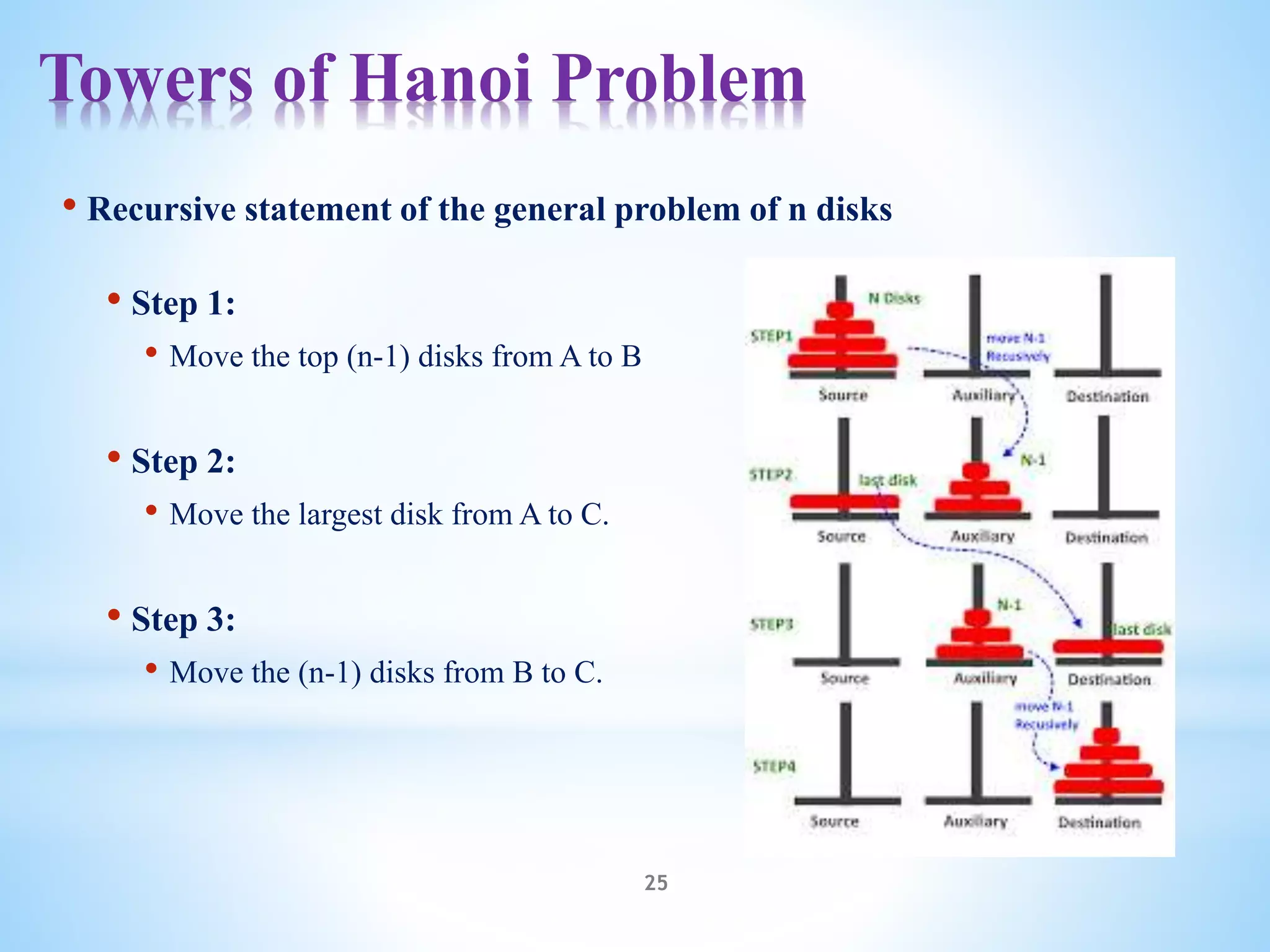
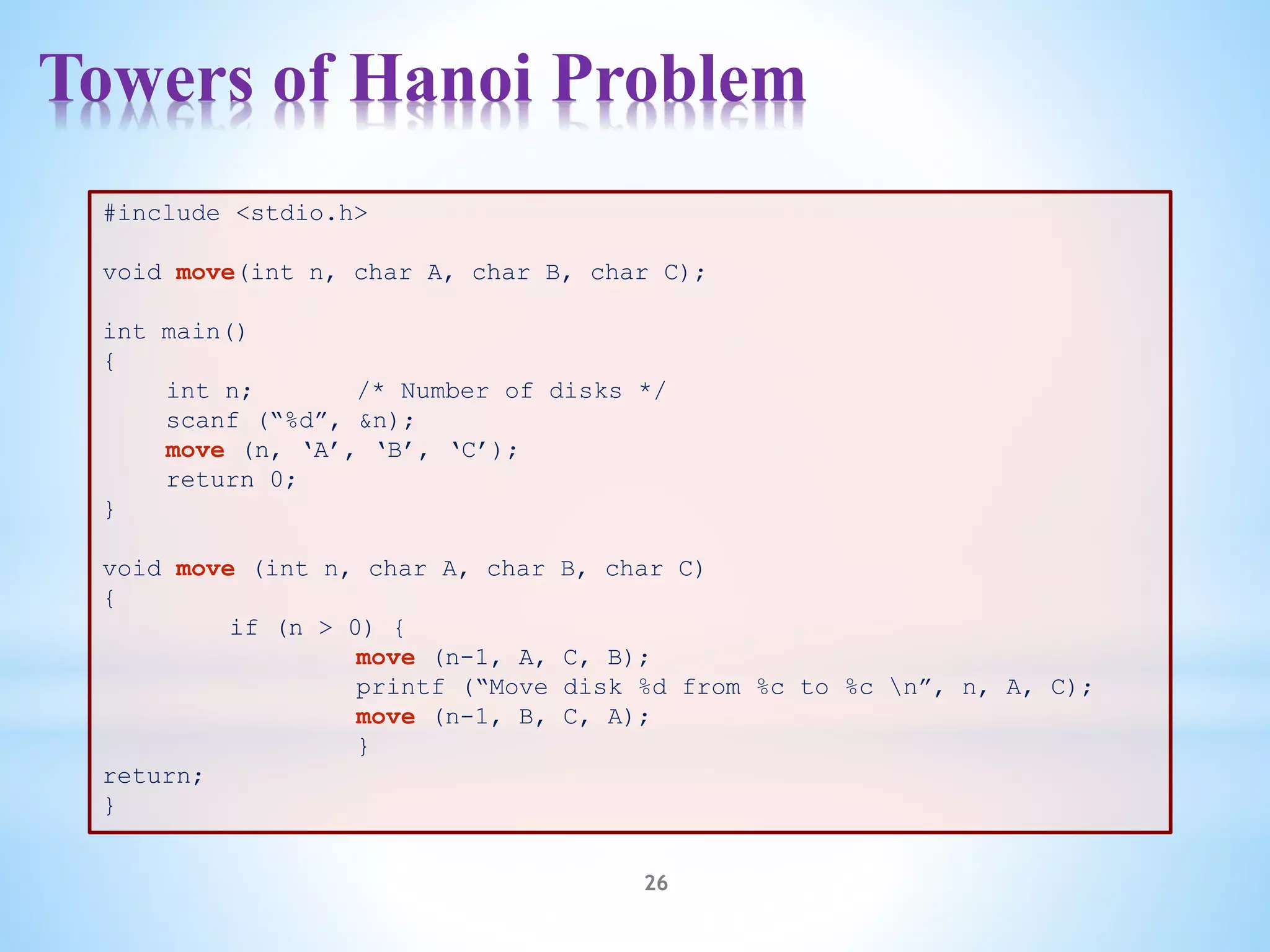
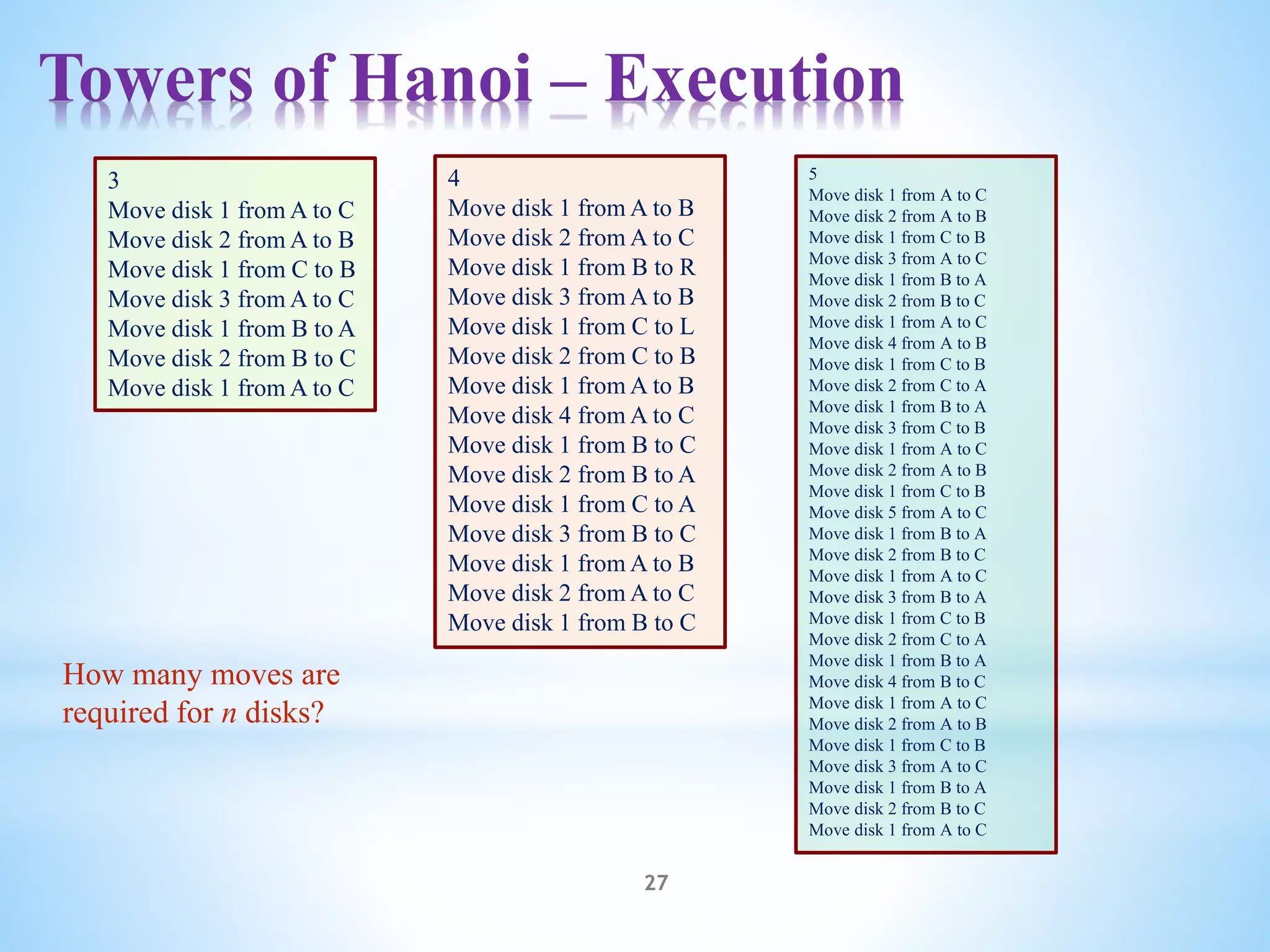
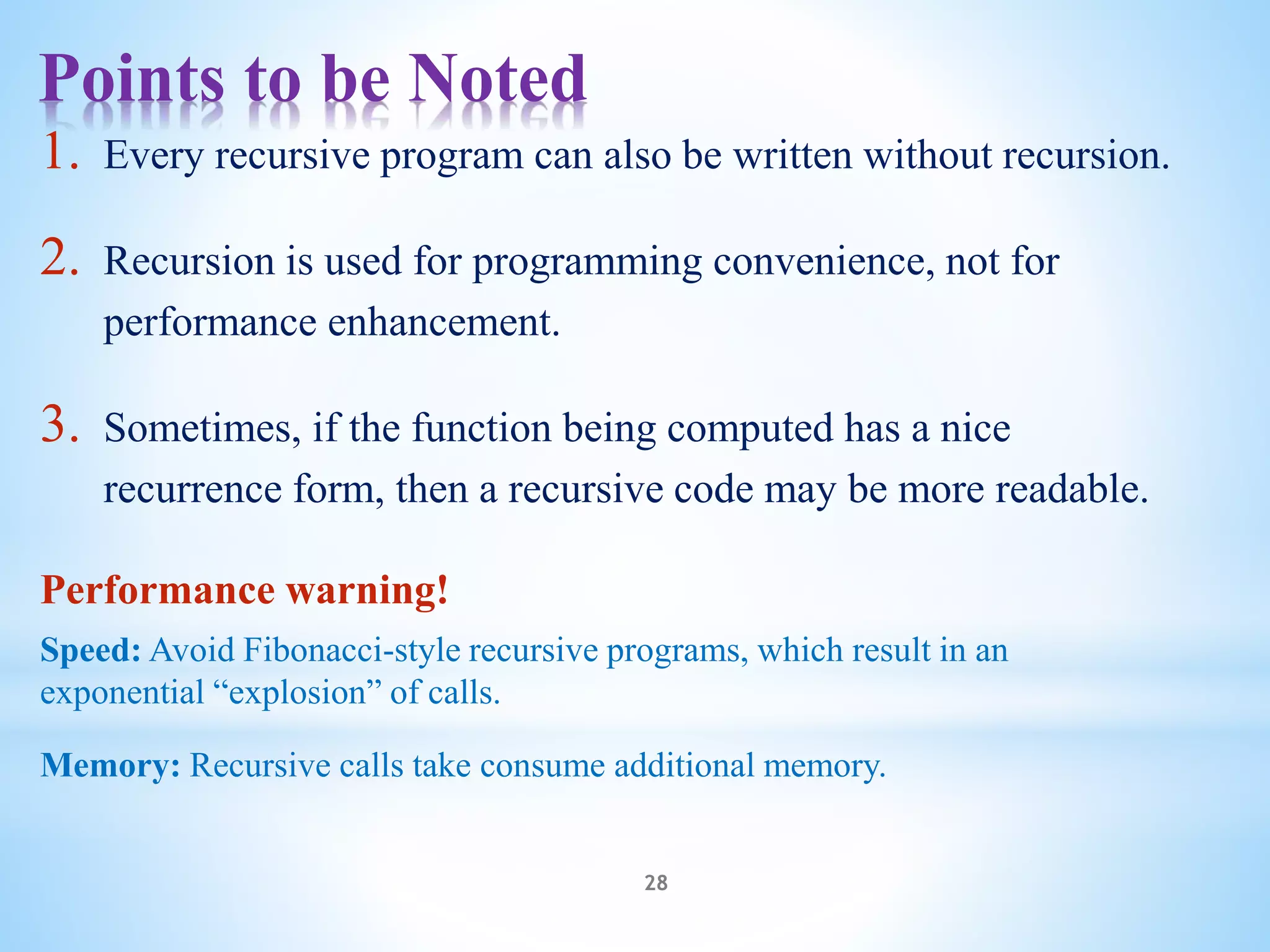
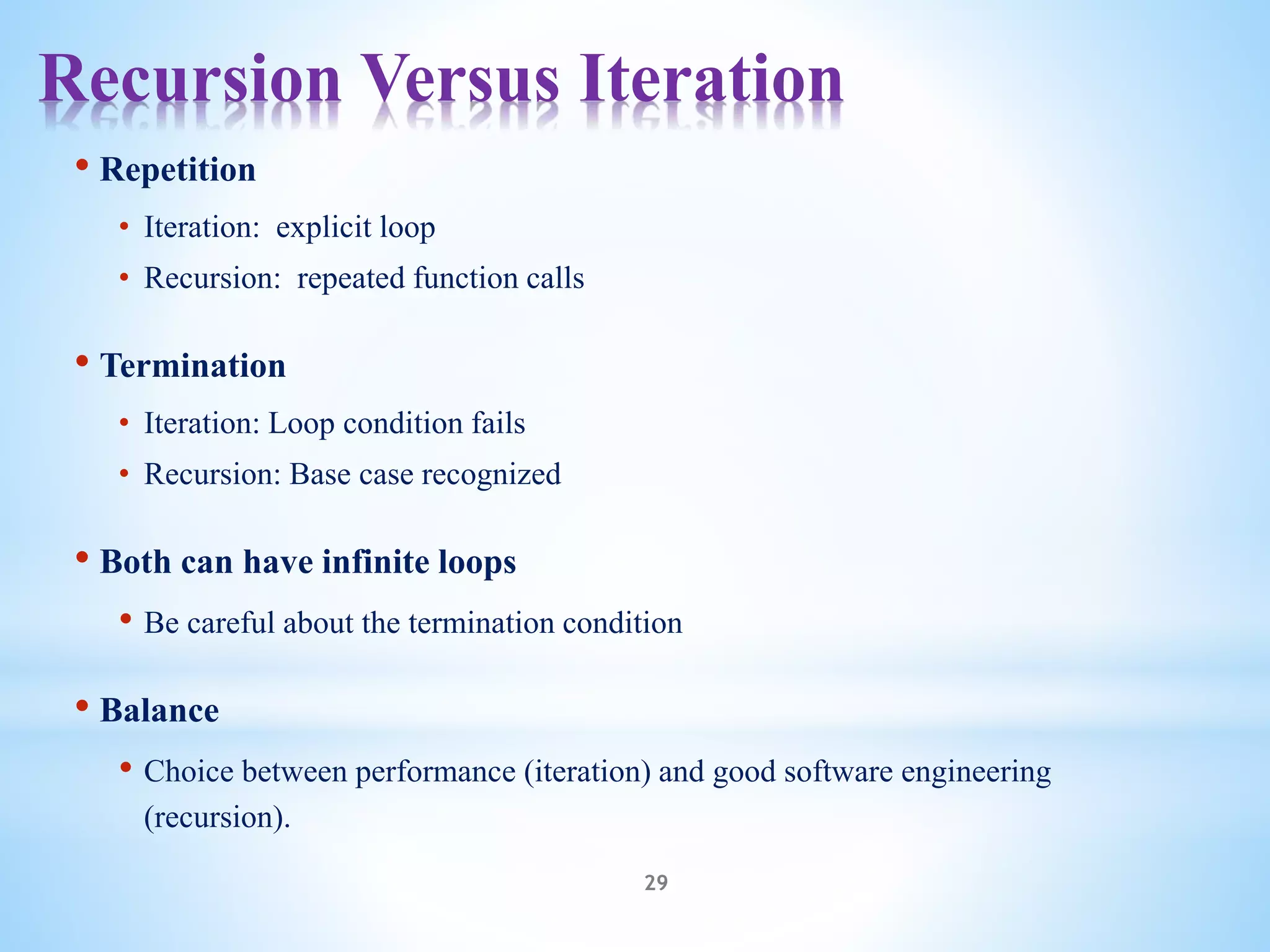
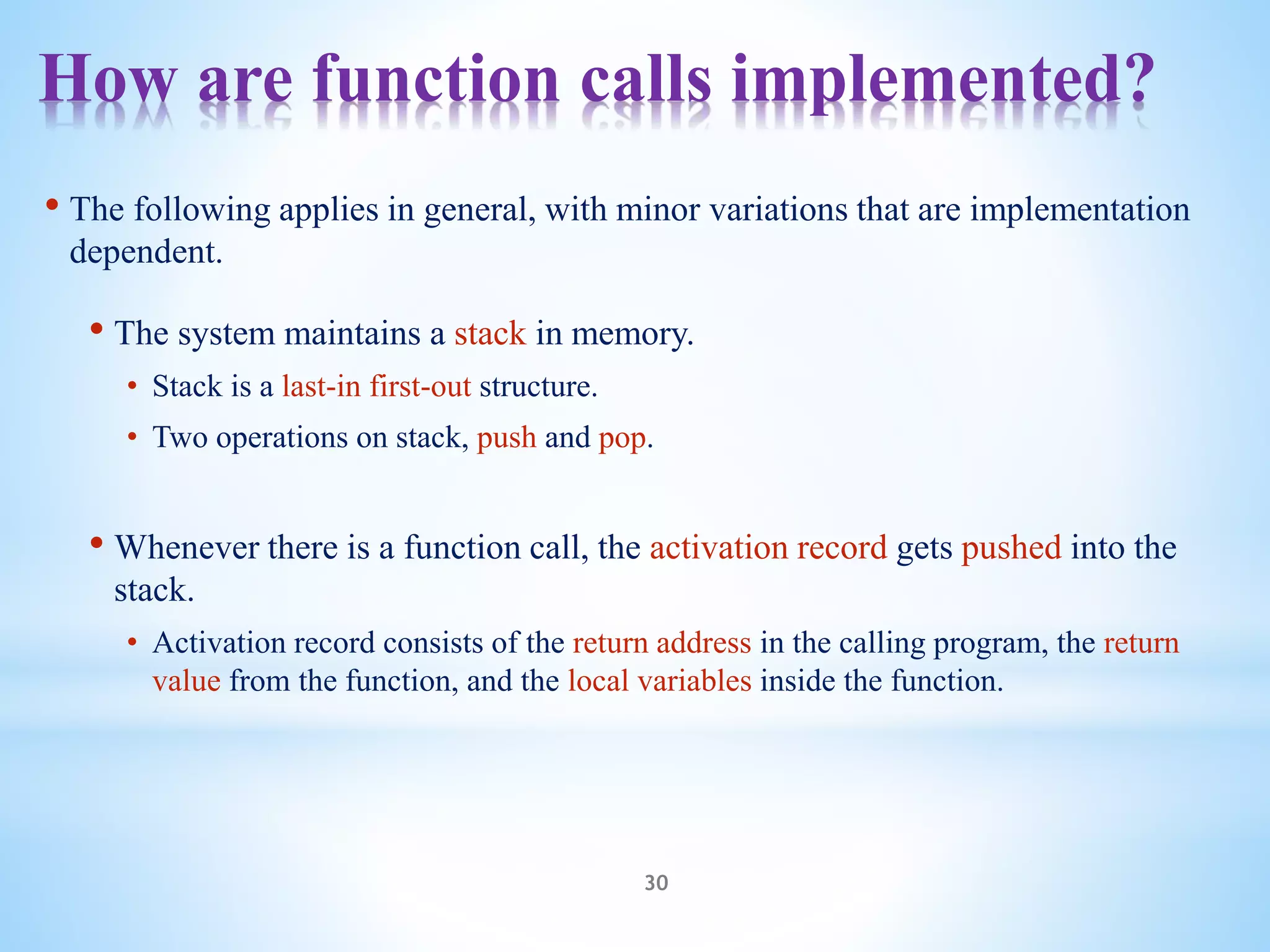
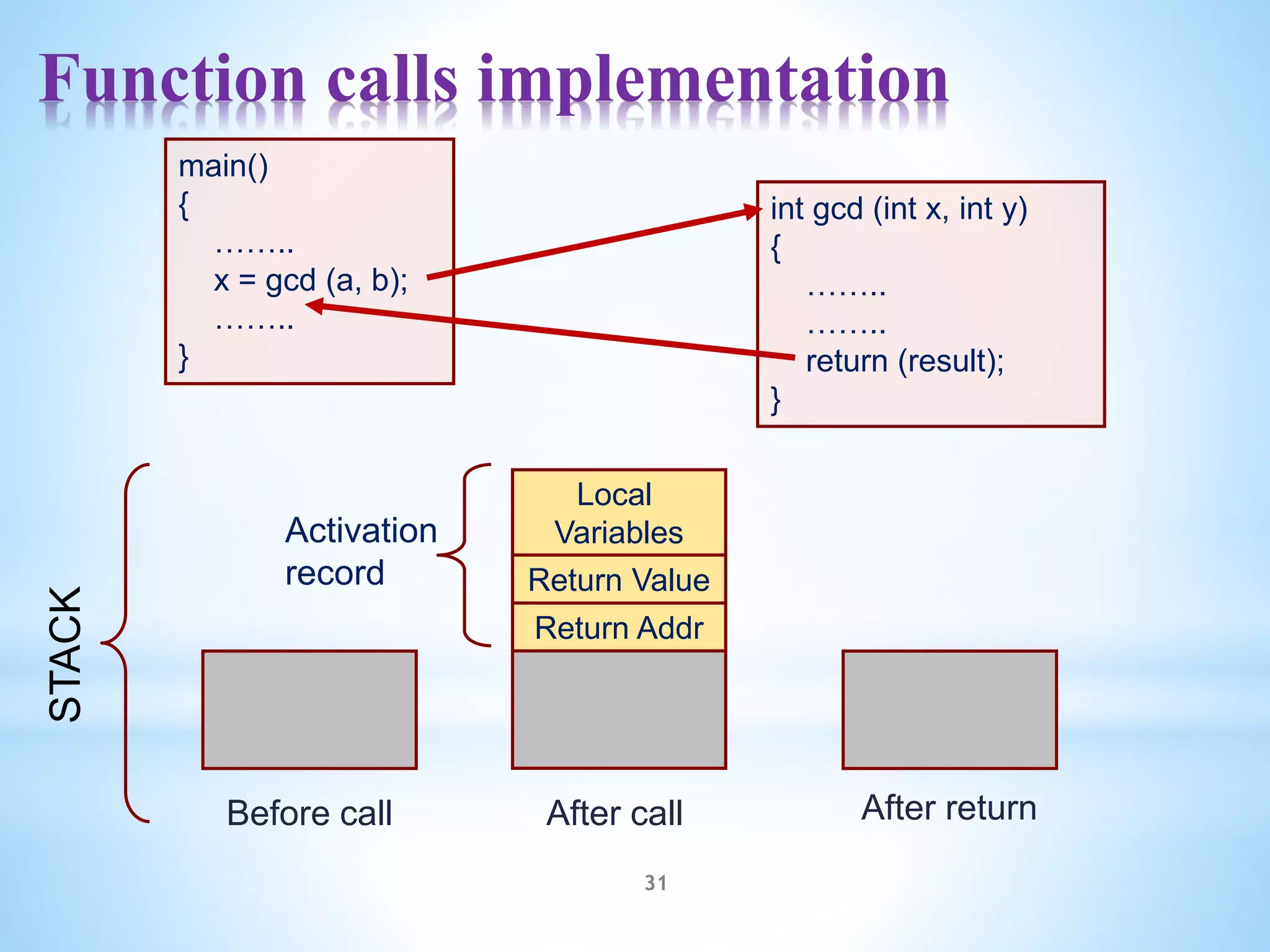

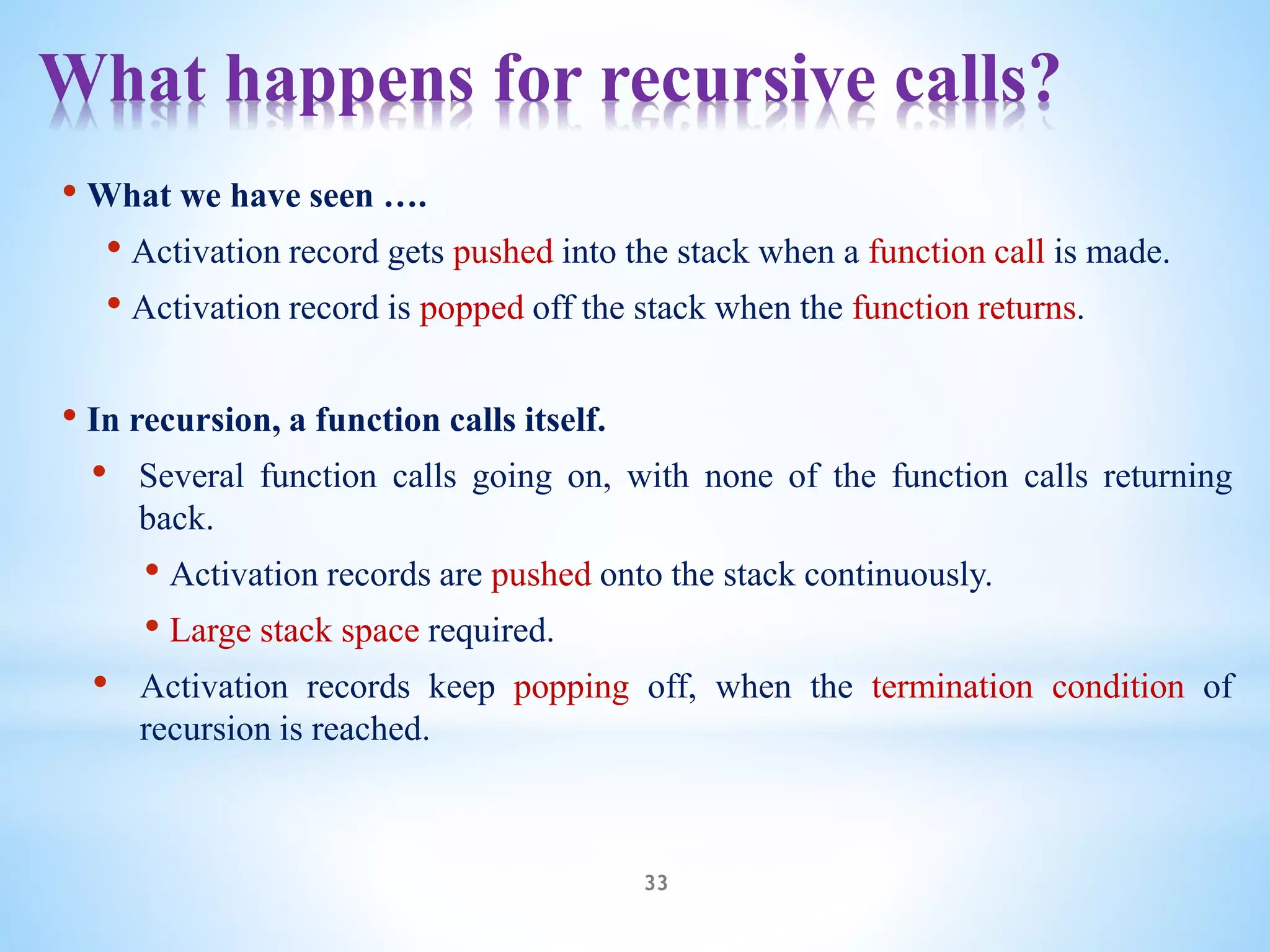
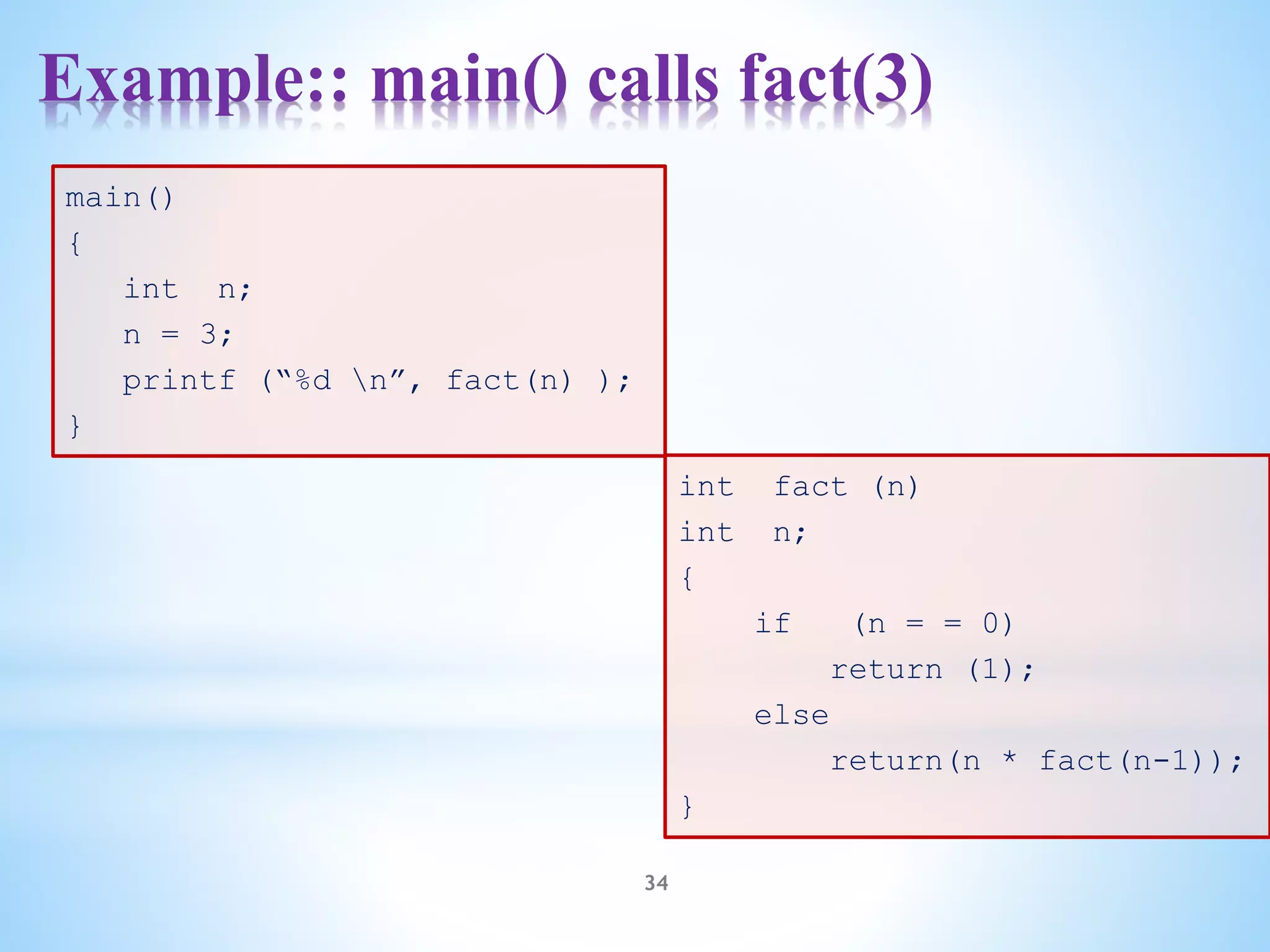
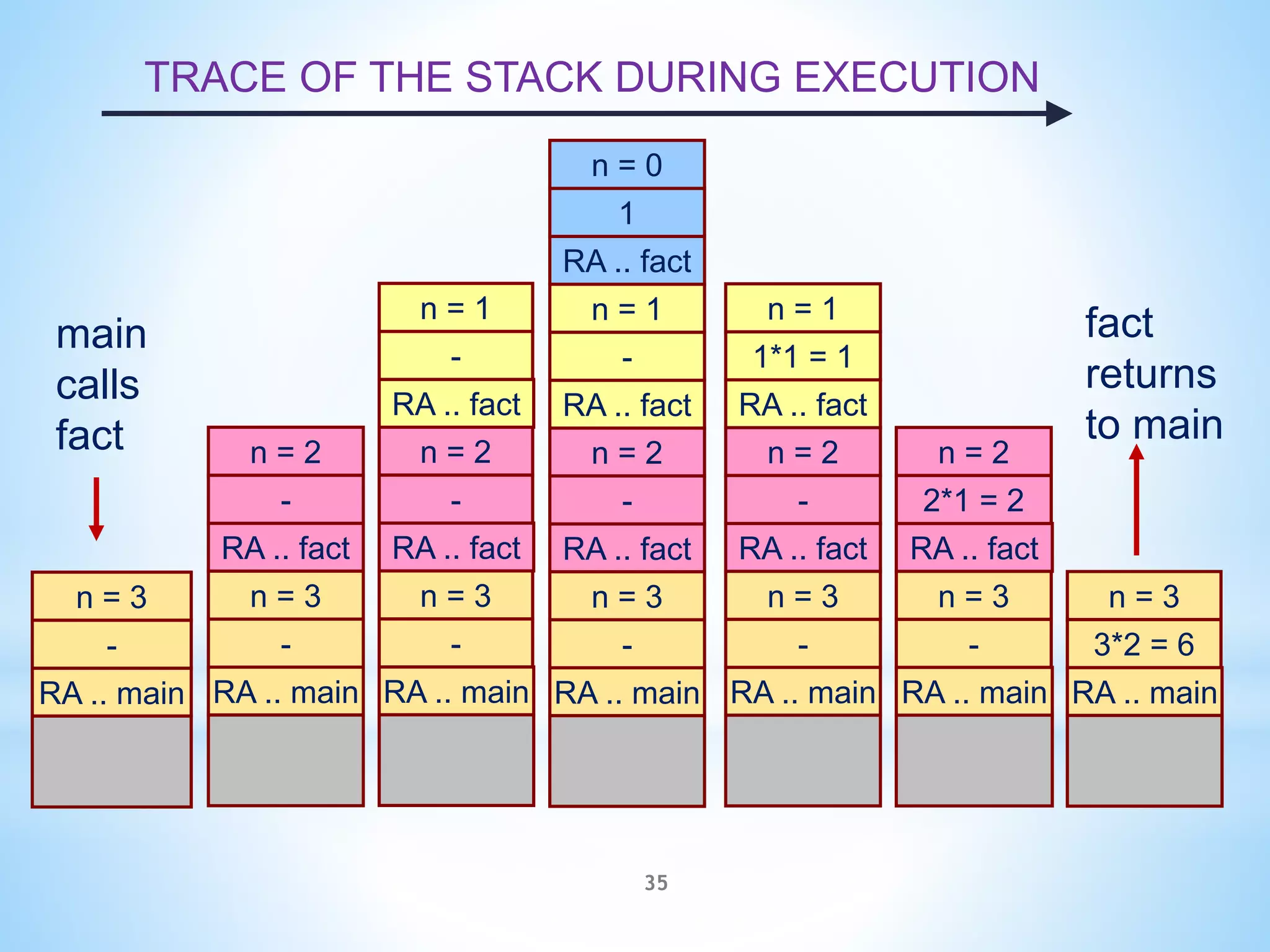
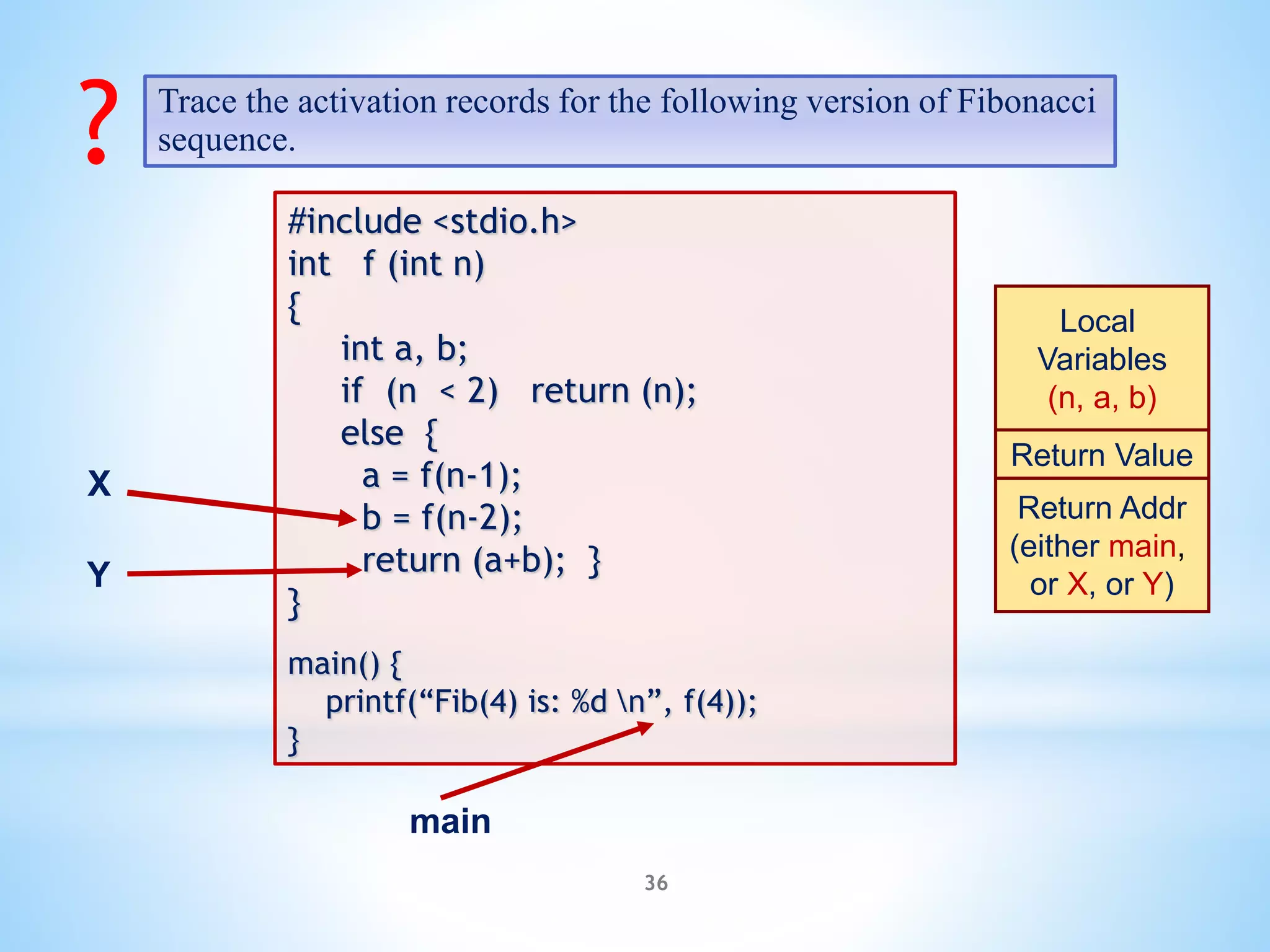

![Problems to Ponder…
38
1. Add a counter to count the number of function calls occurs in each of the sample recursive programs
discussed in this lecture slides.
2. If a local variable is defined in side the body of recursive function, what will happen to the values of that
variables?
3. Formulate each of the following algebraic formulas in recursive forms.
a) sum = a[0] + a[1] + a[2] + … + a[size], where a[size] is an array of integer with size size.
b) y = 1 − 𝑥 +
𝑥2
2!
−
𝑥3
3!
+
𝑥4
4!
−∙∙∙ −1 𝑛 𝑥𝑛
𝑛1
c) 𝑦 = 𝑥𝑛
, where x is any floating point number and n is a positive integer. Find the values of y using i)
iteration and ii) recursion
d) Find the product of n floating point numbers. The numbers should be read from the keyboard. You
should not use any looping construct. [Hint: use recursion and decide a suitable sentinel for
termination of recursion.]](https://image.slidesharecdn.com/06recursioninc-230110145617-ee0464f3/75/06-Recursion-in-C-pptx-38-2048.jpg)